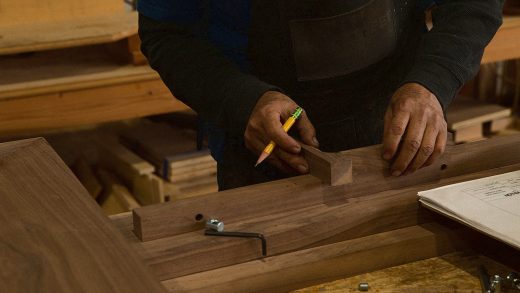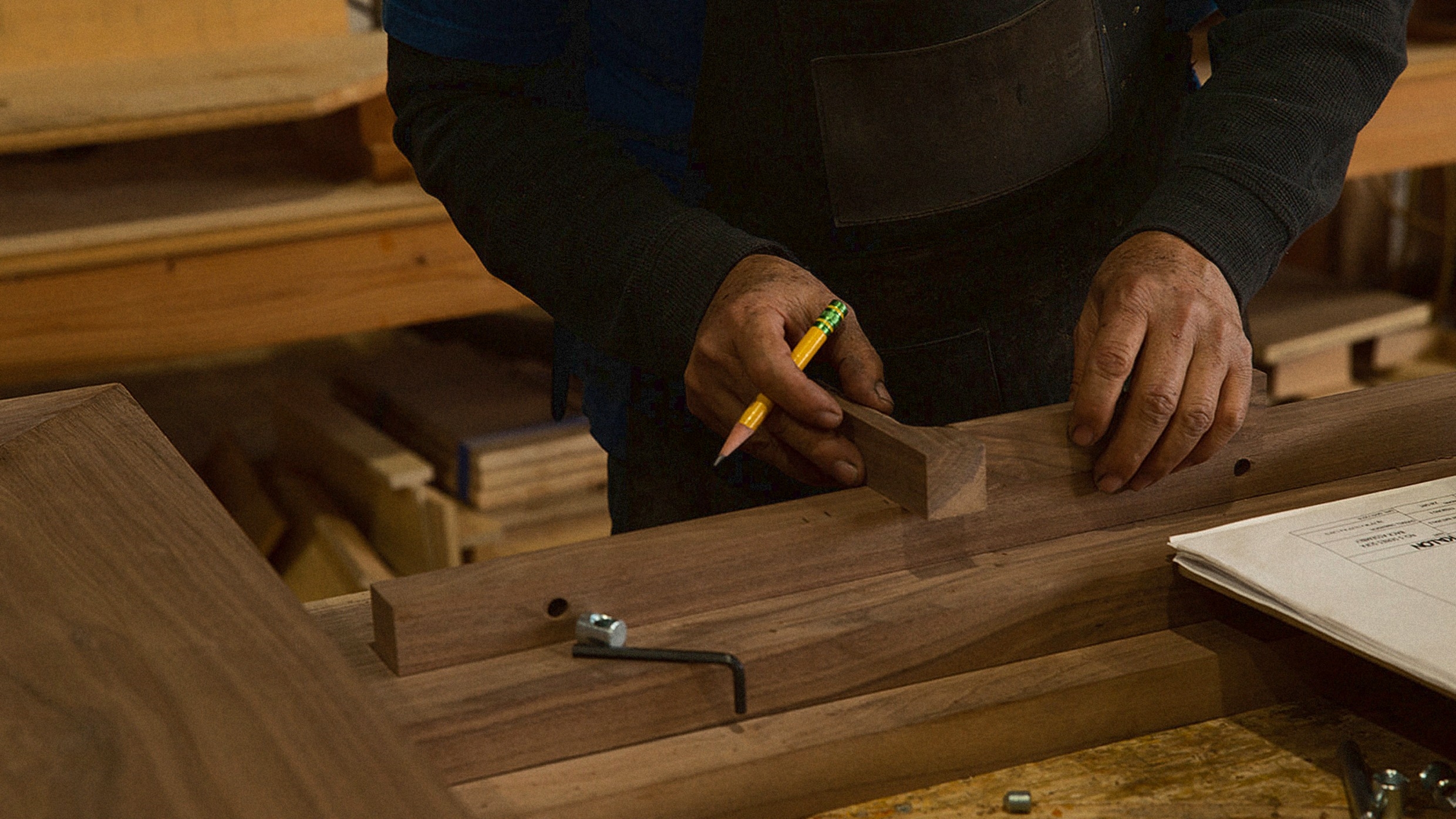American manufacturing has crushed independent designers, reshaping your living room in the process
By Nicole Gull McElroy
Johann Pauwen and Michaele Simmering began making furniture in their driveway in 2007, with just four pieces to show at a local design fair near their home in Los Angeles. Today their furniture studio, Kalon, is known for its clean-lined, solid wood designs that include everything from cribs to dining tables to wood-framed sofas.
A few years ago, the husband-and-wife pair decided to make and sell a mattress as part of their line. “That turned into a crazy research process,” Simmering recalls. They wanted to use an organic ticking fabric for the mattress, something that would feel comfortable and luxe. But it didn’t take long for the Kalon founders to realize that most manufacturers weren’t tooled for ticking fabric. Jersey fabric had become popular, and organic fabrics had fallen off in variety. Nearly every vendor they approached had invested in retooling for jersey knits and couldn’t produce the product they’d hoped for.
It was a quick and dirty lesson in what it means to toe the line between design and scale in the furniture industry. “We can design whatever we want, but if we want to get it made, there’s a reality that comes in very quickly,” Simmering says.

Kalon exists in the fuzzy gray space of the furniture market: Its goods are neither mass-manufactured nor handcrafted one-offs. Its prices, while expensive, don’t live at the furthest reaches of the high-end market. But they also aren’t affordable to those who shop at the Wayfairs of the world. Kalon’s hardwood Rogosa sofa, for instance, costs $10,450. Its Io crib is priced at $3,200.
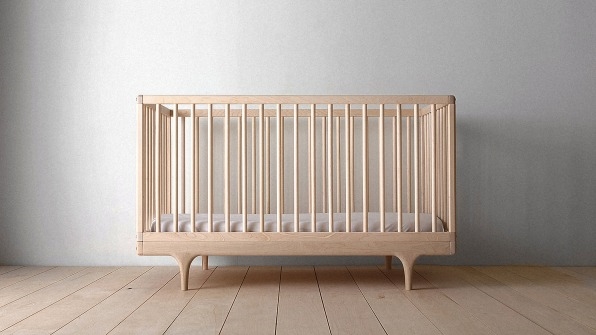
This is exactly where Kalon’s founders intended for the brand to be—making small quantities of high-quality furniture that’s designed to last. “When you’re standing in front of a very well-made piece of furniture, and its solid wood, it makes a space feel different,” Simmering says. “One of the driving ethos for the work is to create an experience for the people where there is an awareness of the materiality.”
But in a world defined by the warp-speed trends and prices of fast furniture, it’s also a difficult position to navigate. It’s taken Pauwen and Simmering years to identify manufacturing partners that make sense for their production size, and it’s been a struggle to land on margins that are not only scalable but also reflect their design ethos.
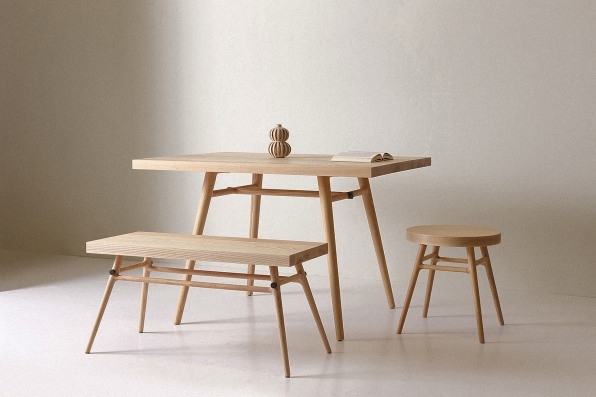
Kalon’s business is part of a larger story at play in American manufacturing, illustrating just how tough it is to build and scale a design business in an industry that’s overwhelmingly characterized by polar-opposite approaches: wildly expensive, artisan-produced collectibles on one end, and seasonal designs built for a fast-furniture economy on the other. The result is an industry dominated by the biggest furniture makers, whose size and manufacturing needs dictate what can and cannot be made in the U.S. Competition is most stiff among the middle swath of the industry, leaving consumers with fewer options in a self-fulfilling trend cycle.
“Economically our country is built for really big business,” Simmering says. “It is not one that invites a lot of fresh anything into this space. You have to have a lot of money to do it. That’s been an ongoing part of our process, and it’s why we’re as slow growth as we are.”
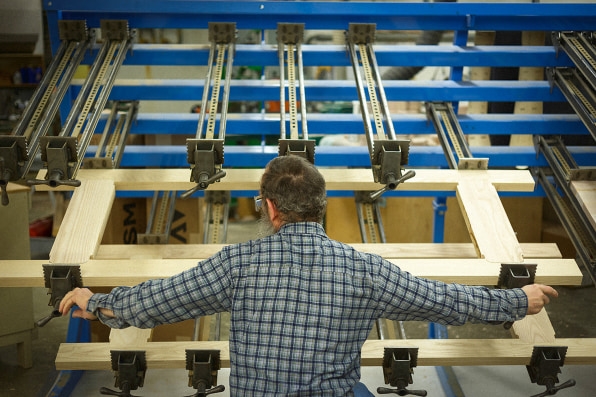
Ken Smith is a partner at Smith Leonard, a CPA firm in High Point, North Carolina, with decades of experience and dozens of clients in the furniture industry. He writes an industry newsletter called Furniture Insights that in addition to covering news and trends, follows the top manufacturers, distributors, and retailers in furniture ranked by a trade publication called Furniture Today.
“It is a very fragmented industry. After the top four or five manufacturers and distributors, you will find [the average size of businesses] drops off substantially,” Smith says, noting that those few large players dominate the space.
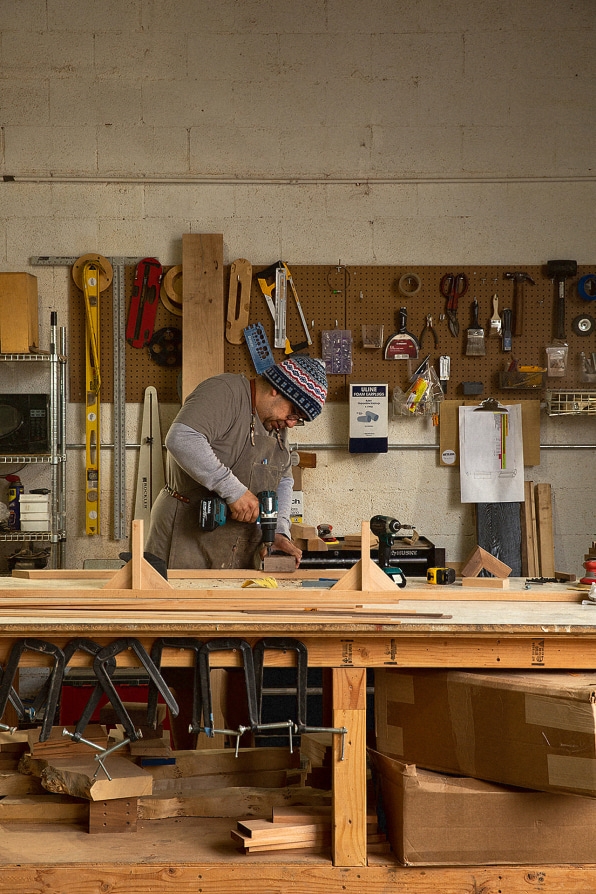
Part of the issue is that it’s not economically viable to make furniture if you’re not an Ikea, or Ashley Furniture, or Williams-Sonoma (the latter of which owns West Elm and Pottery Barn, among other brands).
James Martin, who owned his family’s woodworking shop, Keystone Designer, in Meyerstown, Pennsylvania, for more than 30 years, says that during his tenure the net margins on a business like Kalon dropped from a healthy 10% to 15% in 2000 to about 5% in the last decade as competition grew and costs rose, making it tough for any business that size to scale and grow sustainably. Kalon’s Pauwen says 10% to 15% margins are the goal, though manufacturing isn’t set up to always make that possible.
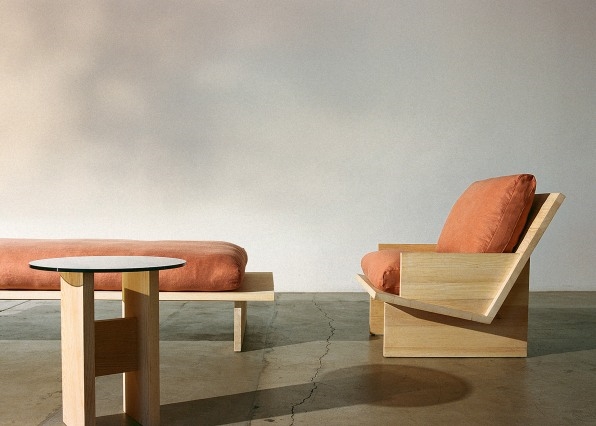
There is no one way to make furniture, Smith says, noting that in some cases outside designers are hired and paid royalties for their designs, while in others the work is done in-house and made overseas. Still other lines are parsed out to midsize manufacturers who handle just certain products depending on what they’re tooled for. Production runs and margins at big retailers like West Elm are entirely different from what studios like Kalon are able to do.
“The furniture industry is a lot more complicated than it looks. . . . You have a whole bunch of different companies that do so many different things. It’s not easy to enter the space,” Smith says.
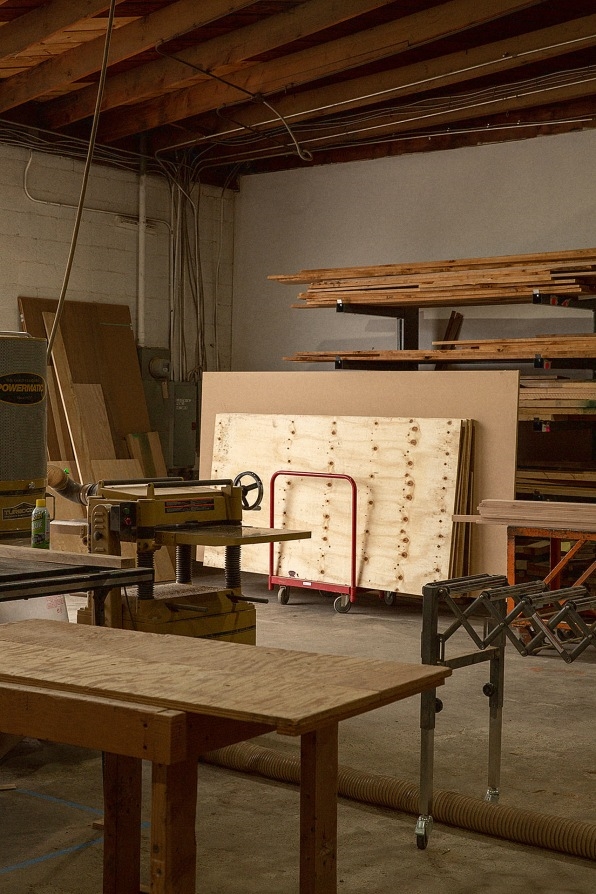
Simmering and Pauwen have engaged in a fair amount of trial and error, and a lot of cold-calling to potential manufacturers, to bring their designs to customers’ homes. An average production run for Kalon, Pauwen says, is maybe 10 or 15 of one item, while larger brands may be looking to make 100 or even 500 of a given item at a time.
“We have a set amount of resources and we need to allocate them in a way that’s stable and consistent,” Simmering explains. “Those giant jolts—a run of 500—that’s too destabilizing.”
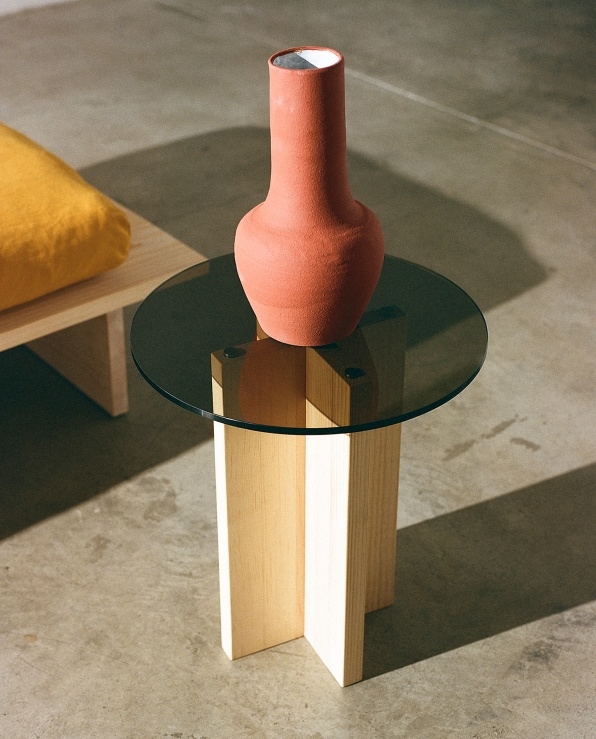
The same goes for manufacturers. The delicate matchmaking process can be long and tiring. “When we were first starting out, one veteran of the industry told me that he couldn’t work with us because he had to feed the beast—the beast being his manufacturing business,” Pauwen recalls. “And not only did there have to be enough volume in the work, but a lack of complexity in order to make his business work. He simply didn’t see how he could profit by working with us at the scale we were and producing the types of products we made. You have to either promise to be a gold mine, or [be] a proven winner and fit into their workflow in just the right way to fill capacity.”
Simmering says the search for a new manufacturing partner often begins with 50 phone calls and ends with three possibilities. “You have a year of conversation and in the end maybe you’re lucky with one,” she says. Another obstacle is skilled labor. For example, some of Kalon’s pieces require a hand wax, not a spray finish, which some manufacturers aren’t set up to do at scale.
Tyler Hays is considered an OG in the world of high-end furniture studios. He started his brand, BDDW, 25 years ago, when “Pier One was the only game going.” While Hays has realized an incredible amount of success (his pieces sell for upward of $15,000 to a relatively rarefied customer base) he is almost jarringly practical about what it takes to be successful.
“It’s a mind-numbing amount of work, and it was 10 or 15 years before I saw a profit. It’s really hard,” Hays says, noting that you can generally find someone to do what you want with the materials you prefer, it may just make zero financial sense to follow through. “For instance, a good mattress—they’re out there. They can do anything you want. It will just be $8,000 for the cushion. It’s tricky.”
Tackling scale and establishing solid manufacturing relationships have been the biggest challenges for Kalon. In its first two years of business, the studio worked with nine manufacturing shops. “The American wood products industry was in a free fall,” Simmering says. “We’d find a new shop and they’d shut down. Companies weren’t passing on to the next generation. It was dizzying and depressing.”
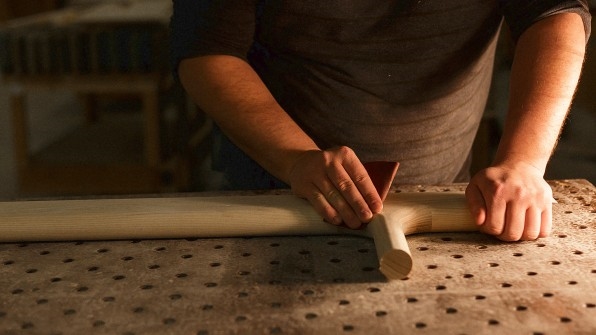
Ultimately, the studio found success with a few midsize manufacturing companies, often in Mennonite communities in Pennsylvania, Ohio, and Maine that Simmering says are fairly entrepreneurial. Once Kalon established a relationship with a company, they were able to innovate alongside the manufacturer, experimenting with design and finish.
“The smallest factory we work with is 10,000 square feet,” Pauwen says. “They’re very sophisticated and we really like the quality and respectfulness in these relationships. They have a willingness to engage on a design level.”
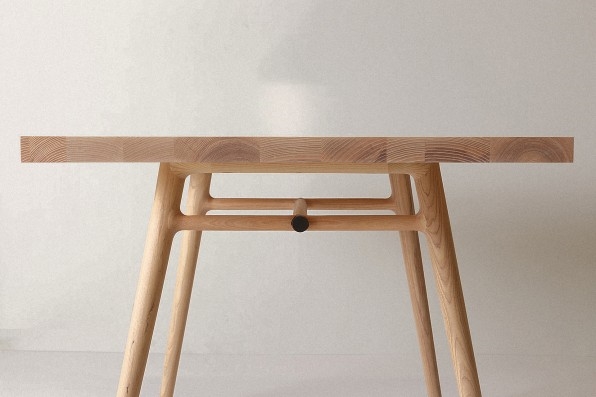
Ryan Hershberger is the owner of Ohio-based manufacturing companies Tree Craft and Canal Dover, with 55 employees and 62,000 square feet of manufacturing space, as well as relationships with both smaller players like Kalon (for whom they make the Simple Collection) and larger outfits such as Arhaus. Hershberger, who grew up Amish, has been in the business for 15 years and says that the value of the “American made” storyline is seeing a comeback, after years of growth in overseas production.
Brands like Kalon, he says, have helped bolster his client base and match a sweet spot in Dover Canal’s skill set. “Every manufacturer has to know what they’re good at and what they can produce,” he says. “We have to say no to a lot that crosses our desk. Kalon, they have an interesting design. It’s that perfect combination of good craftsmanship with the right amount of technology.”
Jason Horvath is cofounder of Brooklyn-based Uhuru Design, which designs and builds furniture for commercial spaces including restaurants, offices, and hotels. His company made some of the same discoveries as Pauwen and Simmering, which led to the opening of its own 35,000-square-foot manufacturing arm in Denver, Pennsylvania, which allowed it to tap into the craftsmanship of the Mennonite community there. “We ran into the Shake Shack guys when they only had four restaurants,” he recalls. “They were like, ‘How much are these chairs?’ and we were like, ‘They’re 900 bucks,’ and they were like, ‘We can’t do that.’”
Like their counterparts at Kalon, Horvath and his partner had to juggle the ways in which design and manufacturing inform one another. “We had this conundrum,” Horvath says. “We knew, based on the numbers, we weren’t going to be able to expand enough locally at the right price point. It was the next step of letting go of being a small craft shop in Brooklyn.”
Tim Richartz, who teaches furniture design at Pratt Institute, says he sees the value in keeping an operation small. “There’s a certain attention that you get that pervades,” he says. “You can find people who are willing to create products that are meaningful, and as creative people that’s what we want to do. Obviously, we want to sell things like hotcakes, but there’s satisfaction in a job well done.”
For now, Pauwen and Simmering say that despite the challenges, the studio model still works for them. For one thing, it allowed them to grow the brand while fostering their commitment to quality and sustainability. “We are as much interested in the design as we are in the way things are made,” Simmering says. “We may give more complicated or hesitant answers to how we define success. It’s different from ‘How do we make the most money?’ It’s been complicated from the outset. We’re looking at every choice we make and what’s being impacted by it.”
(14)

